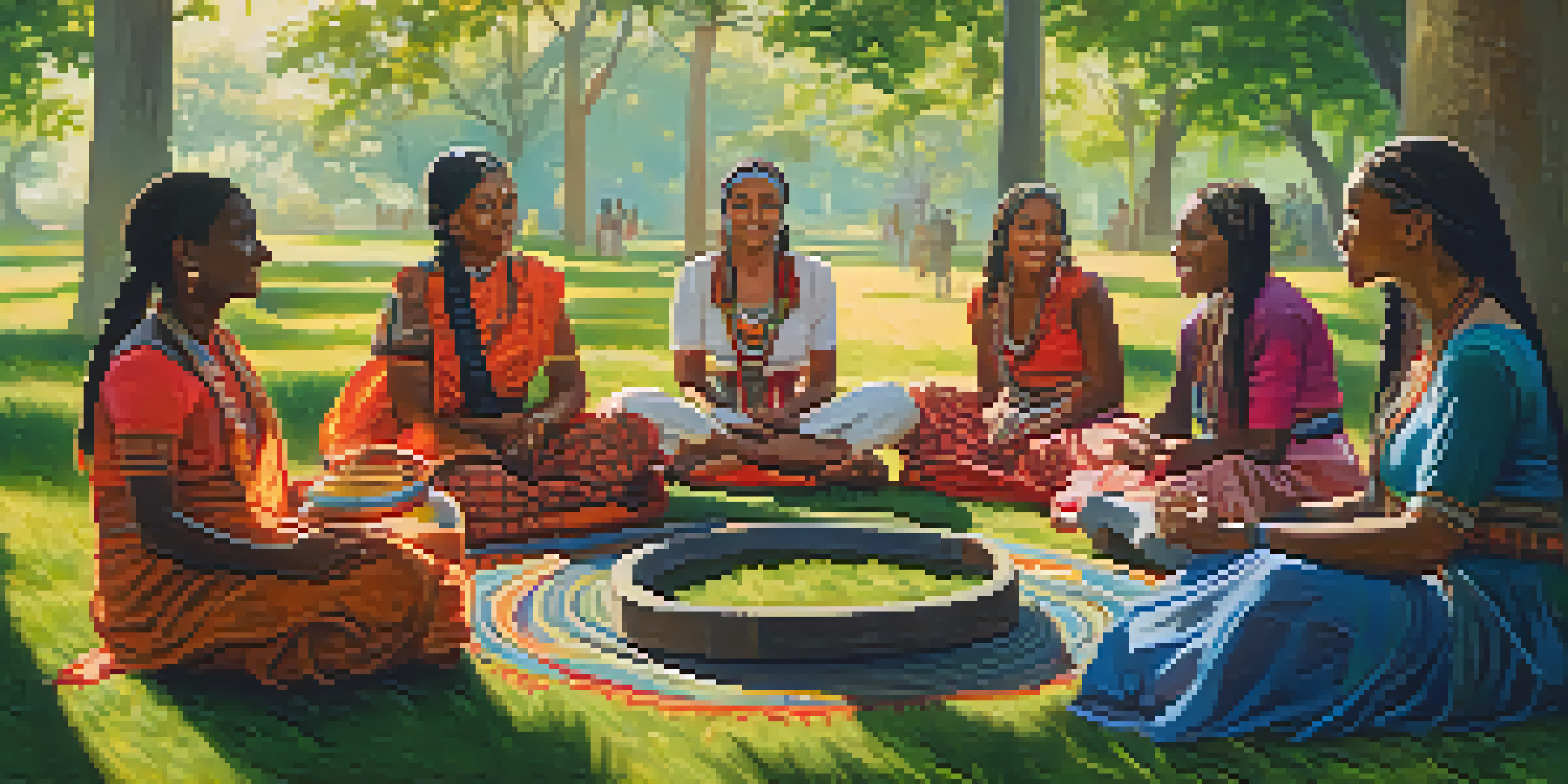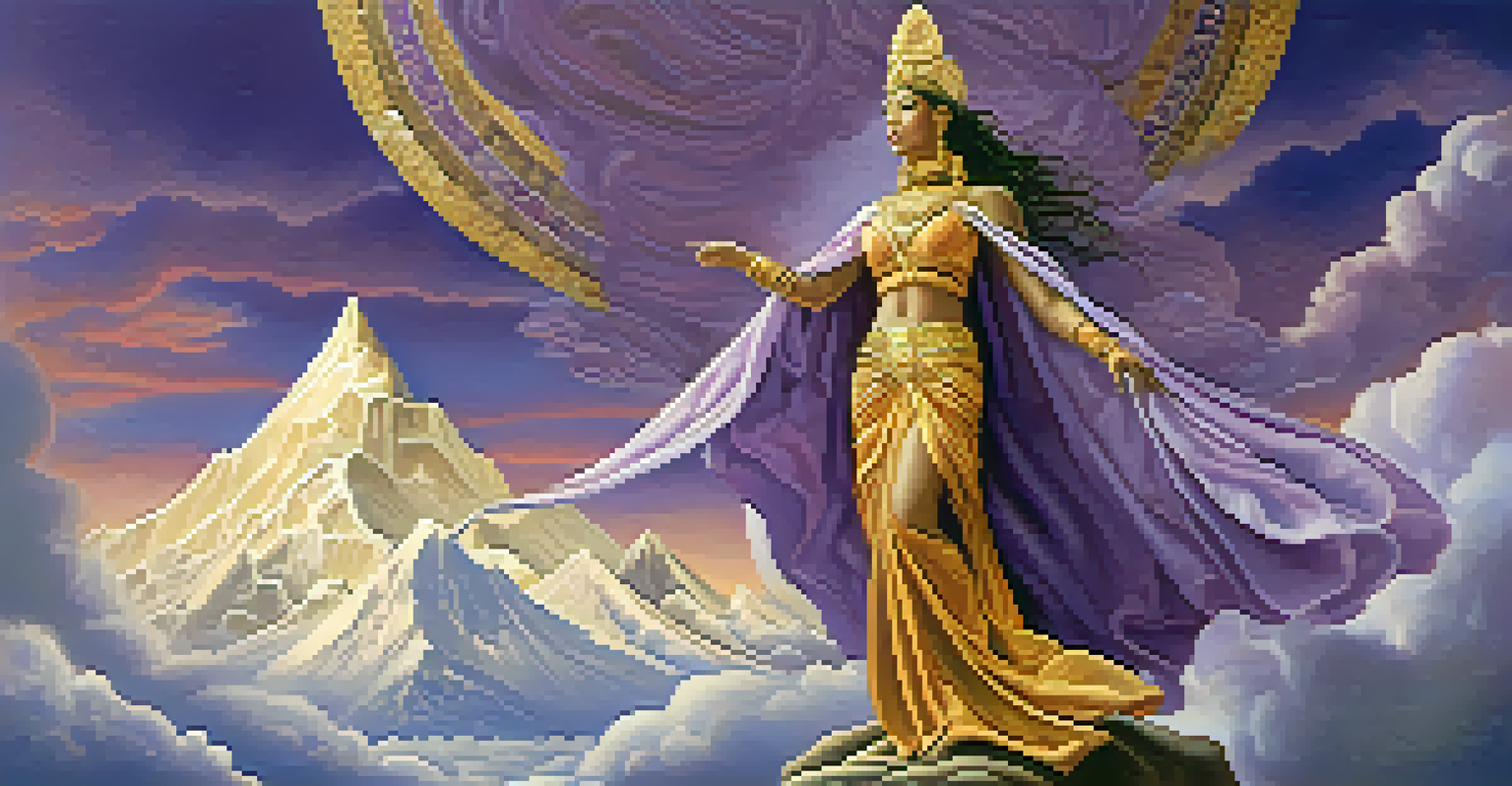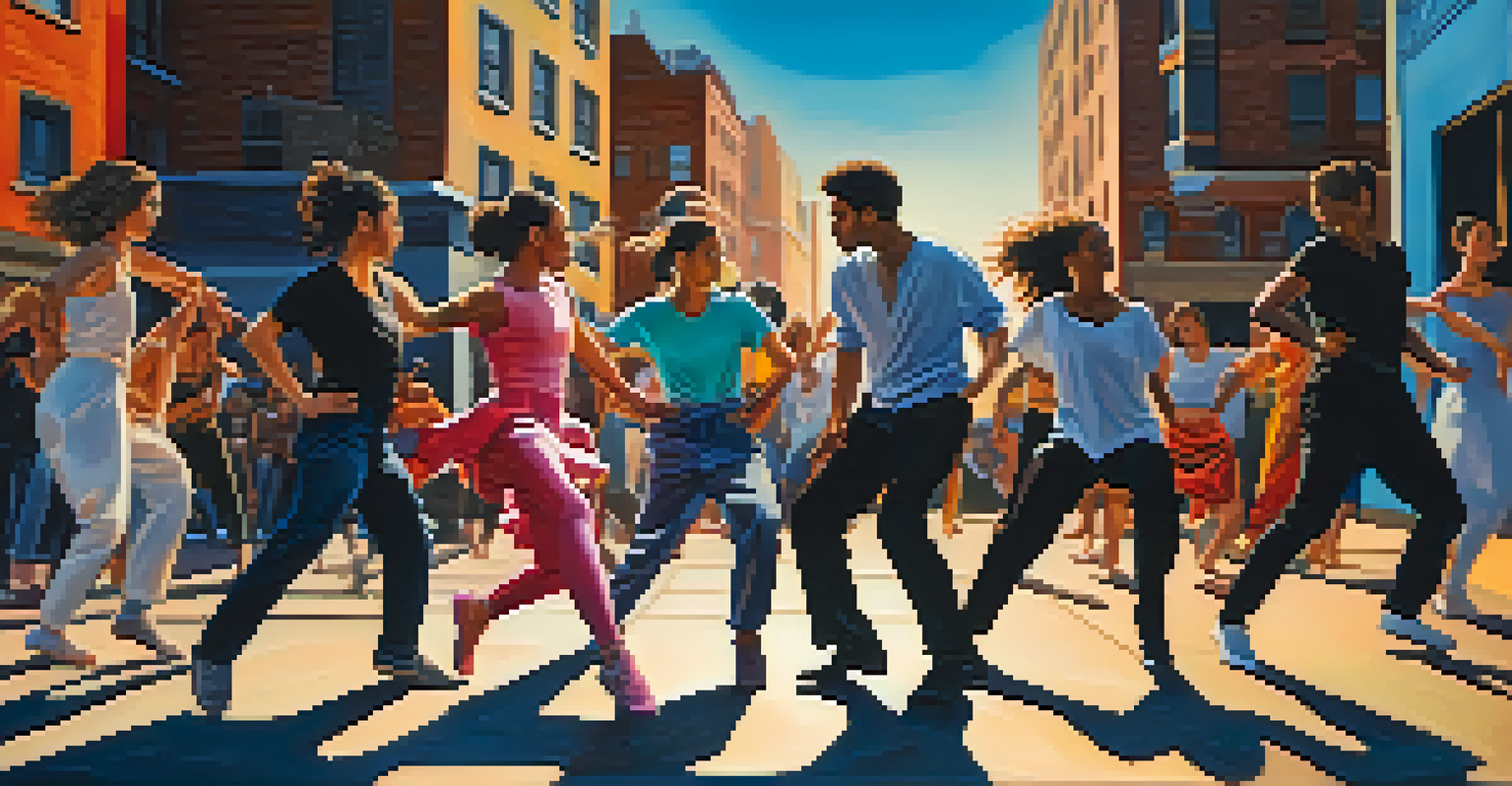Folklore and Gender: Artistic Expressions of Cultural Roles

Understanding Folklore and Its Cultural Significance
Folklore encompasses the traditions, stories, and artistic expressions of a culture. It serves as a mirror reflecting the values, beliefs, and social structures of a community. The narratives often passed down through generations highlight the norms and expectations surrounding gender roles.
Folklore is the art of the people, and it reflects the values, beliefs, and customs that are essential to a culture.
For instance, many folktales feature male heroes embarking on quests, while female characters might be portrayed as caregivers or moral guides. These recurring themes can shape societal perceptions of gender, influencing how individuals view their roles within the community. Through folklore, we gain insights into the historical context that informs these gendered expectations.
Understanding the foundations of folklore helps us appreciate the artistic expressions that evolve from these cultural narratives. It opens the door to exploring how these stories can reinforce or challenge traditional gender roles, prompting discussions about equality and representation.
The Role of Mythology in Gender Representation
Mythology is a powerful aspect of folklore that often articulates gender dynamics through deities and legendary figures. Many myths depict gods and goddesses embodying specific traits, which can reinforce societal norms. For example, a goddess of fertility may symbolize traditional female roles while a god of war might represent masculinity and valor.

These archetypal representations can influence how cultures view gender capabilities, often limiting or expanding the roles individuals feel they can assume. When we analyze these myths, we not only uncover the values of a society but also question how they shape real-world attitudes towards gender.
Folklore Reflects Gender Norms
Folklore mirrors societal values, often reinforcing traditional gender roles through its narratives.
Moreover, contemporary artists often reinterpret these myths, bringing fresh perspectives that challenge outdated gender norms. By doing so, they create dialogue around the need for more equitable representations in both folklore and broader cultural narratives.
Folklore as a Tool for Gender Empowerment
Folklore can also serve as a powerful tool for gender empowerment, allowing marginalized voices to be heard. Female storytellers, for instance, have used folklore to reclaim their narratives and challenge patriarchal structures. By weaving their experiences into traditional tales, they create new stories that reflect their realities and aspirations.
Myth is a past that is not dead, but a past that is alive and transformative, shaping our present and future.
An example is the resurgence of women's storytelling circles, where women share folklore that emphasizes female strength and resilience. These gatherings not only preserve cultural heritage but also foster community and support among women. They highlight the importance of collaboration in redefining gender roles within the context of tradition.
As folklore evolves, it can inspire movements advocating for gender equality. By highlighting women's contributions to folklore, we can shift perceptions and encourage a more inclusive understanding of cultural roles.
Artistic Expressions: Visual Arts and Gender Roles
Visual arts, such as painting and sculpture, play a significant role in expressing gender roles within folklore. Artists often depict scenes from folktales that highlight traditional gender dynamics, showcasing the expected behaviors and roles of men and women. This provides a visual representation of cultural narratives that can reinforce or question societal norms.
For instance, in many cultures, male artists may focus on heroic figures, whereas female artists might represent domestic scenes or nurturing relationships. However, this is changing as more female artists explore diverse themes, challenging the historical focus on traditional roles and bringing new stories to light.
Mythology Shapes Gender Dynamics
Myths articulate gender dynamics, influencing societal perceptions of capabilities and roles across cultures.
These artistic interpretations not only preserve folklore but also invite viewers to reflect on their own perceptions of gender. By engaging with these works, audiences can begin to question the roles assigned to them and consider the possibility of new, more equitable narratives.
Performative Arts: Dance and Gender Identity
Dance is an expressive form of folklore that often conveys deep cultural meanings related to gender identity. Traditional dances can illustrate the roles assigned to men and women, from the graceful movements of female dancers symbolizing femininity to the powerful gestures of male dancers representing strength. These performances often reflect societal ideals and expectations.
However, contemporary dance has become a platform for challenging these traditional representations. Many choreographers are now blending styles and breaking gender boundaries, allowing for a more fluid expression of identity. This shift not only enriches the artistic landscape but also encourages audiences to rethink rigid gender roles.
Through dance, artists can convey narratives that resonate with diverse experiences, promoting inclusivity and understanding. As performative arts continue to evolve, they offer a unique avenue for exploring and redefining gender identities within the framework of folklore.
Literature and Gender: Folklore's Narrative Power
Literature is a key vehicle for the transmission of folklore, rich with narratives that explore gender roles. Folktales often include moral lessons tied to gender expectations, serving both to entertain and to instruct. The stories told in literature can either reinforce traditional roles or provide a critique of them, depending on the author's perspective.
As feminist literature gains prominence, many authors are reclaiming folktales and retelling them from a female perspective. This shift not only diversifies the narratives available but also empowers women by highlighting their experiences and perspectives. These reinterpretations can challenge the status quo, prompting readers to rethink their understanding of gender roles.
Art as a Medium for Empowerment
Artistic expressions in folklore can empower marginalized voices, fostering discussions around gender equality and representation.
Ultimately, literature allows for the exploration of complex themes surrounding gender, identity, and power dynamics. By engaging with these narratives, readers can draw connections between folklore and contemporary issues, fostering a deeper understanding of the cultural roles that shape our lives.
The Future of Folklore and Gender in Artistic Expression
As society continues to evolve, so too does the representation of gender in folklore and its artistic expressions. New generations of artists, storytellers, and performers are increasingly aware of the need for inclusive narratives that reflect the diversity of human experiences. This shift is evident in various artistic mediums, from visual arts to literature and dance.
Emerging technologies also play a role in reshaping how folklore is shared and experienced. Digital platforms enable artists to reach wider audiences, facilitating the exchange of ideas and cultural narratives across the globe. This interconnectedness fosters a richer dialogue about gender roles and encourages collaboration among diverse voices.

Looking ahead, the continued exploration of folklore and gender will likely inspire new movements that advocate for equality. As artists challenge traditional narratives and create inclusive representations, they pave the way for a more equitable understanding of cultural roles in our ever-changing world.